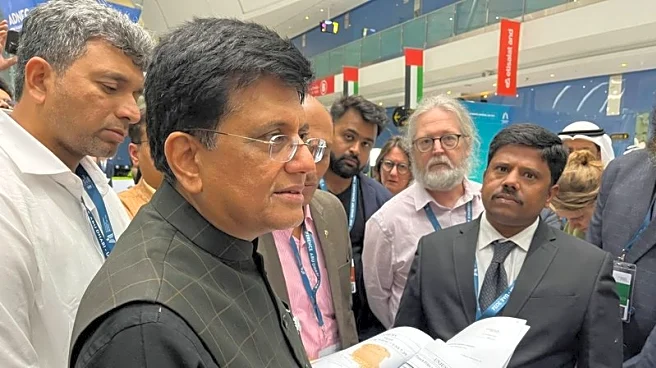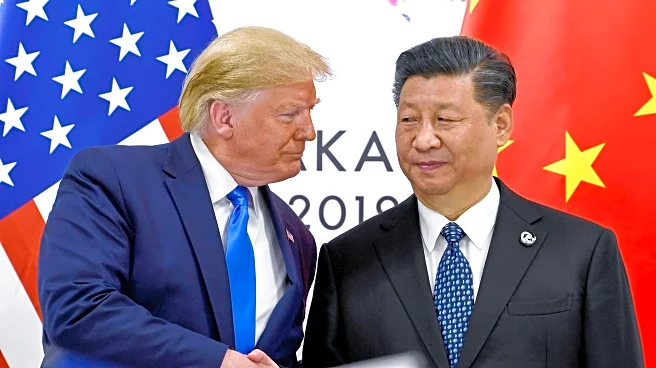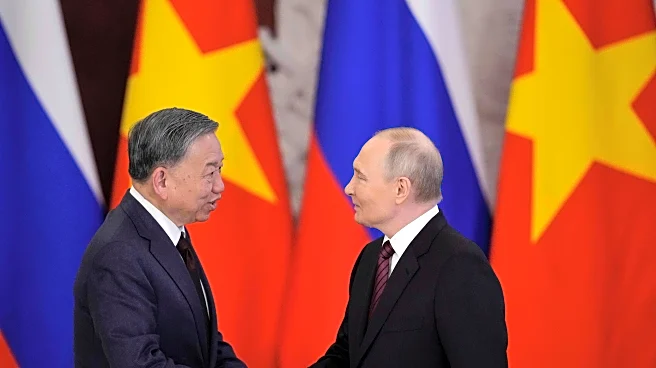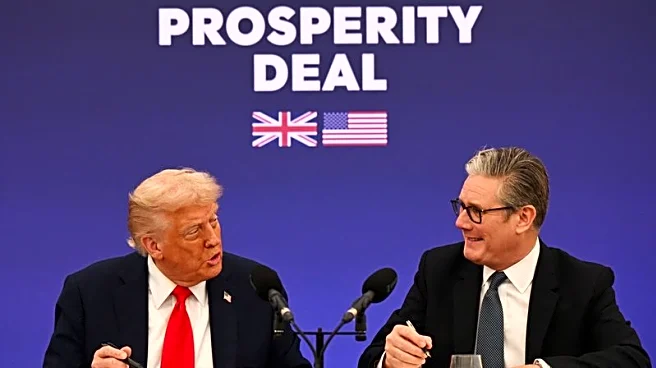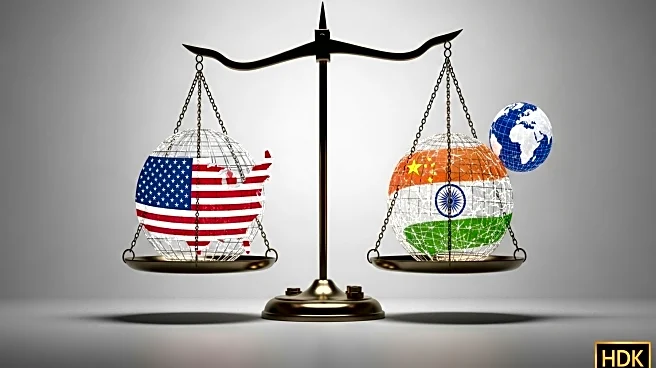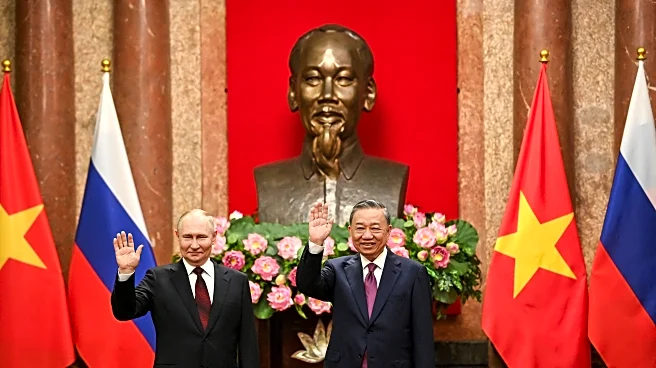What's Happening?
India and the United States are set to engage in trade discussions aimed at resolving ongoing disputes over agricultural tariffs. Commerce and Industries Minister Piyush Goyal will lead a delegation to the United States on September 22, 2025, to further negotiations for a bilateral trade agreement. The talks are expected to address the U.S. demand for India to reduce tariffs on agricultural imports, which have been a significant point of contention. President Trump has imposed a 25% tariff on imports from India, with an additional 25% penalty due to India's crude oil imports from Russia. These tariffs have impacted Indian agricultural exports, which include shrimp, rice, honey, and other products. The U.S. is a major market for Indian agricultural goods, accounting for 8% of India's exports in this sector.
Why It's Important?
The trade talks are crucial as they could significantly impact the agricultural sectors of both countries. For India, reducing tariffs could lead to increased competition from U.S. agricultural products, potentially affecting the livelihoods of small and marginal farmers who make up a large portion of India's workforce. Conversely, the U.S. is seeking to expand its export markets to maintain agricultural prices and revenues, as domestic demand has not kept pace with production. The outcome of these negotiations could influence trade dynamics, affecting prices and availability of agricultural products in both countries.
What's Next?
The next steps involve further meetings between the two countries, with a potential agreement expected by late 2025. Stakeholders, including farmers and industry leaders, will be closely monitoring the negotiations. The resolution of tariff disputes could lead to changes in trade policies and practices, impacting agricultural exports and imports. Both countries may need to consider the implications for their domestic agricultural sectors and the broader economic relationship.
Beyond the Headlines
The trade talks highlight broader issues of agricultural subsidies and market dependencies. U.S. farmers benefit from substantial subsidies, which allow them to sell products at competitive prices internationally. In contrast, Indian farmers rely on government support schemes, and changes in tariff policies could affect food security and rural incomes. The negotiations may also reflect geopolitical considerations, as trade relations are influenced by broader diplomatic and economic strategies.





